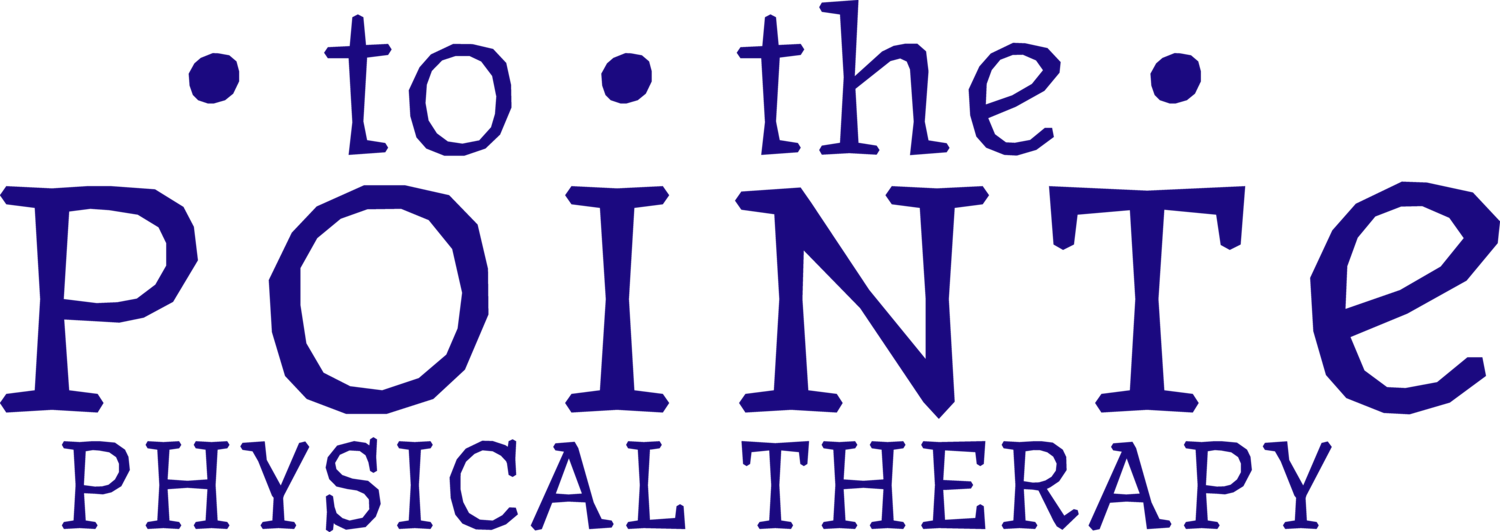What's The Pointe Of Pain? Part One
Life would be great if there was no pain, right? Wrong! Pain is super important! It's our body's way of telling us, "Hey you! Pay attention, I'm sensing a threat!" Our bodies are amazing at self-preservation. Dancers, however, are notorious for ignoring pain signals. Why? There's often pressure to "dance through" pain, especially during performance season. It can be hard to find medical professionals who truly understand our "sport", and dancers often hesitate to seek help for fear they'll just be given some ibuprofen and/or muscle relaxants and told to stop dancing for X amount of time. That's not always realistic, and often not even necessary! We know dancers are incredibly resilient, but is ignoring your pain with the hope it will just go away a good alternative to seeking help? Enter your trusty dance medicine physical therapist.
In this two-part post, my goal is to help you understand a bit about what your pain signals really mean, to hopefully make it less scary next time you feel it and empower you to seek help. Also, neuromatrix is fun to say, and even cooler when you know what it means.
Important pointe (see what I did there?) #1: Remember the part about our bodies being amazing at self-preservation? I'm about to blow your mind. The pain you feel is NOT a reliable indicator of the presence or extent of tissue damage. It's rarely a 1:1 relationship! Both tissue damage and pain can exist without each other. What?! How else can you explain why that sprained ankle that happened on stage didn't really hurt until after the show? The input to your brain from the nerves in your ankle doesn’t determine output (pain experience) from your brain. Your brain assesses the situation lightning fast and makes the decision to send pain signals depending on the environment and emotions that are present at the time, as well as past experiences. It considers everything, not just potential tissue damage. The pain experience does not come from the tissues in your body, it comes from your brain. Read that again slowly. Crazy right? Pain is an output of the brain that is there to protect you. This can be helpful while tissues are healing, and not as helpful in more chronic situations.
Important pointe #2: Pain is a very personal experience and varies greatly between individuals. Think about that sprained ankle and imagine your shoe is pressing on it in an uncomfortable way. Sometimes the nerves that carry the information about the stimulus (your shoe) to the spinal cord can be very sensitive because of inflammation and everything that comes along with it. Your shoe is on your foot like it’s been every day for the past week, and probably isn’t going to damage your tissues, but it sure feels like it now with the sprain. Because of these extra sensitive nerves, now the spinal cord is being bombarded with distorted and amplified threat information. Your ankle is more sensitive to normal touch now than it was before the sprain. The spinal cord sends signals to the brain that something seriously wrong is happening, but it’s just your shoe. This is called peripheral sensitization.
Your brain is constantly changing based on the information it is getting from your body. If the signals it is getting from the spinal cord are distorted and amplified from super sensitive peripheral nerves, its understanding of your foot will change. This central sensitization explains why your ankle may feel like a football on fire but may only have a small amount of swelling and tissue damage. The section of your brain devoted to that ankle has changed. But don’t worry, it can change back! Your brain is incredibly plastic and can reverse those changes with some help.
So, pain level doesn't usually match injury severity, and your brain will actually change based on the input it is receiving. That's all for part one, you made it! I hope this gives you something to think about. What's that? You wanted to learn about the neuromatrix? You'll have to come back next week for pointes 3 and 4! I'm really excited to share them with you, hope to see you then.
Thanks for reading,
Dr. Aimee
References:
Butler, D., Moseley, L., (2013) Explain Pain Second Edition. Adelaide, Australia. Noigroup Publications.
Claus A, MacDonald D. Interpreting Pain Symptoms and How Pain Affects Neuromuscular Control in Dancers. J Dance Med Sci. 2017;21(1):5-12.
Moseley, GL., Butler, D., (2015) Explain Pain Handbook Protectometer. Adelaide, Australia. Noigroup Publications.





